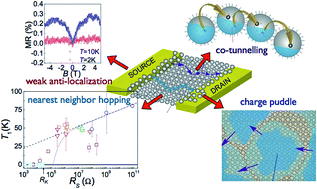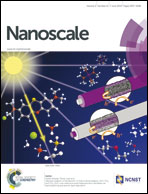Identification of Mott insulators and Anderson insulators in self-assembled gold nanoparticles thin films†
Abstract
How the interparticle tunnelling affects the charge conduction of self-assembled gold nanoparticles is studied by three means: tuning the tunnel barrier width by different molecule modification and by substrate bending, and tuning the barrier height by high-dose electron beam exposure. All approaches indicate that the metal–Mott insulator transition is governed predominantly by the interparticle coupling strength, which can be quantified by the room temperature sheet resistance. The Hubbard gap, following the prediction of quantum fluctuation theory, reduces to zero rapidly as the sheet resistance decreases to the quantum resistance. At very low temperature, the fate of devices near the Mott transition depends on the strength of disorder. The charge conduction is from nearest-neighbour hopping to co-tunnelling between nanoparticles in Mott insulators whereas it is from variable-range hopping through charge puddles in Anderson insulators. When the two-dimensional nanoparticle network is under a unidirectional strain, the interparticle coupling becomes anisotropic so the average sheet resistance is required to describe the charge conduction.


 Please wait while we load your content...
Please wait while we load your content...